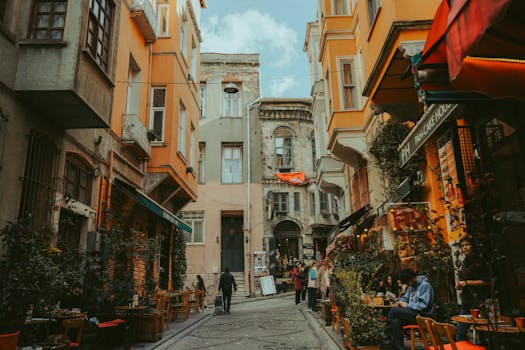
Traveling Through Time: How Europe’s Historical Heritage Shapes Modern Lifestyles in 2025
Focus Keyword: Traveling Through Time, Europe’s historical heritage has a profound impact on modern lifestyles. From the picturesque canals of Amsterdam to the romantic streets of Paris, each city in Europe boasts a unique blend of historical and cultural landmarks that shape the way people live, work, and interact with one another. As we journey through the continent, it becomes evident that the past continues to influence the present, and in 2025, this is more apparent than ever.
Section 1: Architectural Landmarks and Urban Planning
Europe’s historical heritage is perhaps most visible in its stunning architectural landmarks. The Eiffel Tower, the Colosseum, and Big Ben are just a few examples of iconic structures that have become synonymous with their respective cities. These landmarks not only attract millions of tourists each year but also serve as a reminder of the continent’s rich history and cultural diversity. In 2025, many of these landmarks have been meticulously restored and integrated into modern urban planning, providing a unique blend of old and new.
For instance, the city of Barcelona has incorporated its famous Park Güell into a larger urban renewal project, transforming the surrounding neighborhood into a vibrant hub of activity. Similarly, the city of Rome has implemented a series of sustainable transportation initiatives, making it easier for residents and visitors to navigate the city’s historic center while minimizing their environmental impact.
Section 2: Culinary Traditions and Local Produce
Europe’s historical heritage is also deeply rooted in its culinary traditions. From the hearty stews of Ireland to the delicate pastries of France, each country boasts a unique gastronomic identity that reflects its cultural and historical context. In 2025, many of these traditional dishes continue to play an important role in shaping modern lifestyles, with a growing emphasis on local produce and sustainable agriculture.
In Italy, for example, the concept of slow food has become increasingly popular, with many restaurants and cafes prioritizing locally sourced ingredients and traditional cooking methods. Similarly, in Spain, the tradition of tapas has evolved to incorporate modern flavors and ingredients, while still maintaining its roots in the country’s rich culinary heritage.
Section 3: Cultural Festivals and Community Events
Europe’s historical heritage is also celebrated through a wide range of cultural festivals and community events. From the Carnival of Venice to the Oktoberfest in Munich, these events bring people together and provide a glimpse into the continent’s rich cultural diversity. In 2025, many of these festivals have evolved to incorporate modern themes and technologies, while still maintaining their historical roots.
For instance, the city of Edinburgh hosts a annual festival of arts and culture, featuring a wide range of performances, exhibitions, and workshops. Similarly, the city of Berlin hosts a annual festival of lights, transforming the city’s historic landmarks into a dazzling display of color and sound.
Section 4: Preserving Historical Heritage for Future Generations
As we look to the future, it is essential that we prioritize the preservation of Europe’s historical heritage for future generations. This involves not only protecting and restoring historical landmarks but also promoting cultural education and awareness. In 2025, many organizations and initiatives are working to promote the importance of historical heritage, from museums and cultural centers to community outreach programs and educational initiatives.
By prioritizing the preservation of historical heritage, we can ensure that the rich cultural diversity of Europe continues to shape modern lifestyles for generations to come. Whether through architecture, cuisine, or cultural festivals, Europe’s historical heritage remains a vital part of its identity, and its influence will only continue to grow in the years to come.






